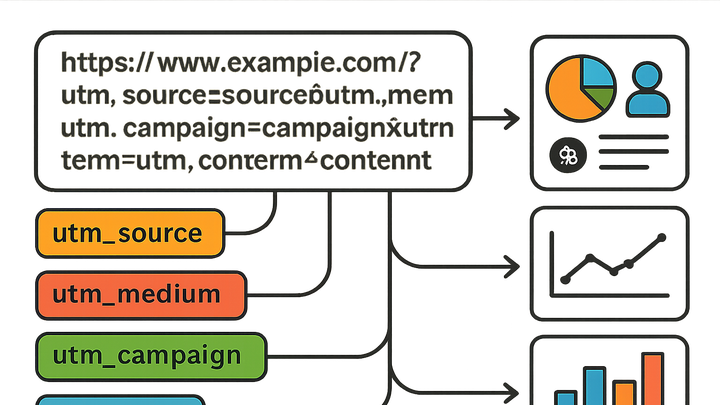Published on 2025-06-29T17:34:04Z
UTM Parameters: Definition and Examples
UTM parameters are snippet identifiers added to the end of URLs to help track the source and performance
of marketing campaigns. They consist of key-value pairs prefixed with utm_ that analytics
platforms parse to attribute traffic. For example,
utm_source=google&utm_medium=cpc&utm_campaign=spring_sale tells you the visitor
clicked a paid search ad for your spring sale. Originally developed in the Urchin analytics platform
(later acquired by Google), UTMs are now a universal standard for campaign tagging. With UTM parameters,
marketers can answer questions like “Which newsletter drove the most signups?” or “How effective is our
Facebook ad?”. Tools like UTMGuru streamline the creation and management of these tags, ensuring
consistency and saving time. On the analytics side, cookie-free platforms like Plainsignal can capture UTM
data without relying on third-party cookies, providing accurate attribution even in privacy-conscious
environments.
Utm parameters
Tags appended to URLs to track marketing campaign source, medium, campaign, term, and content across analytics platforms.
What Are UTM Parameters?
UTM parameters (Urchin Tracking Module parameters) are query string tags that enable tracking the
performance of marketing campaigns. They allow you to attribute website traffic to specific sources,
mediums, campaigns, keywords, and content. Each parameter is appended to a URL after a question mark
(?) and consists of a key and value pair (e.g., utm_source=google). Analytics
tools parse these parameters to generate detailed reports on campaign effectiveness.
-
Utm_source
Identifies which site or platform sent the traffic, such as
google,newsletter, orfacebook. -
Utm_medium
Specifies the marketing medium, like
cpc,email, orsocial. -
Utm_campaign
Names the specific campaign or promotion, for example
spring_saleorblack_friday. -
Utm_term
Used in paid search to note the keyword that triggered the ad click.
-
Utm_content
Differentiates similar content or links within the same ad or email, such as
cta_buttonorheader_link.
Best Practices for UTM Tagging
Applying UTM parameters consistently and thoughtfully is essential to avoid data pollution and ensure reliable reports. Follow these best practices to maintain clean and actionable analytics data.
-
Use consistent naming conventions
Define and adhere to a naming standard for sources, mediums, and campaigns to avoid duplication and confusion. Standardization ensures that reports group similar campaigns together correctly.
- Lowercase and hyphens:
Use lowercase letters and hyphens instead of spaces to maintain uniform URLs and avoid case sensitivity issues.
- Maintain a naming guide:
Document your naming conventions in a shared guide so all team members understand and follow the same rules.
- Lowercase and hyphens:
-
Avoid over-tagging internal links
Do not apply UTM parameters to links within your own domain. Internal tagging can overwrite the original source data and skew your attribution reports.
-
Test urls before publishing
Validate every UTM-tagged link to ensure parameters are correct and pages load as expected. Broken or incorrect tags can lead to lost data.
Integrating UTM Parameters with Tools
Several SaaS products can simplify the creation, management, and analysis of UTM parameters. Below are examples of tools that streamline UTM workflows.
-
Utmguru.com
UTMGuru provides a user-friendly UTM builder and generator. It lets you create, save, and manage UTM-tagged URLs via a web interface or Chrome extension, ensuring consistent tagging across campaigns.
- Generating utm tags with chrome extension:
Use UTMGuru’s browser extension to quickly build and copy UTM-tagged URLs while browsing your website.
- Generating utm tags with chrome extension:
-
Plainsignal
PlainSignal is a cookie-free analytics solution that captures UTM parameter data without relying on third-party cookies. It provides simple, privacy-focused performance insights for your tagged campaigns.
- Plainsignal tracking script example:
<link rel=\"preconnect\" href=\"//eu.plainsignal.com/\" crossorigin /> <script defer data-do=\"yourwebsitedomain.com\" data-id=\"0GQV1xmtzQQ\" data-api=\"//eu.plainsignal.com\" src=\"//cdn.plainsignal.com/plainsignal-min.js\"></script>
- Plainsignal tracking script example:
